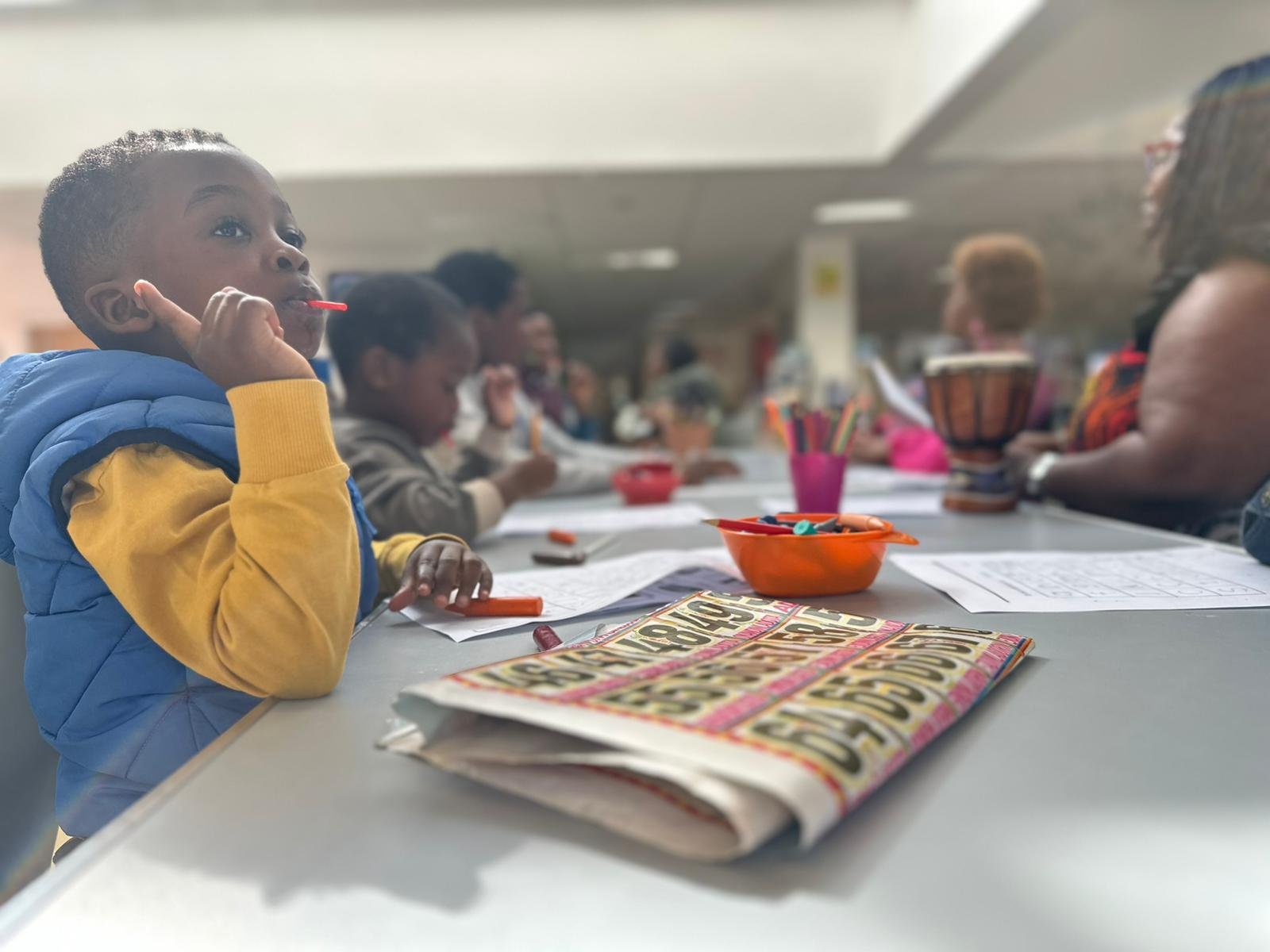
ABOUT
Nípa wa
At Yoruba Language School Ireland, we offer a range of courses catering to different proficiency levels, from beginner to advanced. Our curriculum is designed to cover all aspects of language learning, including speaking, listening, reading, and writing. Additionally, cultural components such as traditional music, dance, food and folklore are integrated into the curriculum to provide a holistic learning experience. We facilitate cultural immersion programs and an home away from home experience here in Ireland."
Aims:
1. Promote and preserve the Yoruba language and culture in Ireland.
2. Provide high-quality Yoruba language education to students of all ages and backgrounds.
3. Foster a supportive and inclusive learning environment that encourages cultural exchange and appreciation.
4. Empower students to communicate effectively in Yoruba and develop a deep understanding of Yoruba culture.
5. Create opportunities for students to engage with native Yoruba speakers and immerse themselves in the language.
Objectives:
1. Offer a comprehensive curriculum that covers all aspects of Yoruba language learning, including speaking, listening, reading, and writing.
2. Provide qualified and experienced Yoruba language teachers who are passionate about teaching and promoting the language.
3. Develop engaging and interactive teaching materials and resources that cater to different learning styles and levels of proficiency.
4. Organize cultural events, workshops, and activities to enhance students' understanding and appreciation of Yoruba culture.
5. Offer flexible learning options, including in-person classes, online courses, and private tutoring, to accommodate the diverse needs and schedules of students.
6. Monitor and assess students' progress regularly to ensure effective learning outcomes and provide personalized feedback and support.
7. Collaborate with other language schools, cultural organizations, and community groups to promote Yoruba language and culture in Ireland.
8. Continuously evaluate and improve the curriculum, teaching methods, and learning resources based on student feedback and industry best practices.
Ní Yorùbá language school ní Ireland, a máa ń fúnni ní oríṣiríṣi ìdánilẹ́kọ̀ọ́ tó wà fún oríṣiríṣi ìpele òye, láti alákọ̀ọ́bẹ̀rẹ̀ sí ẹni tó ti gòkè àgbà. A ṣe ètò ẹ̀kọ́ wa lọ́nà tó máa jẹ́ ká lè kọ́ gbogbo ipa tó jẹ mọ́ kíkọ́ èdè, títí kan kíkọ́ni láti sọ̀rọ̀, láti gbọ́, láti kà, àti láti kọ. Pẹ̀lúpẹ̀lú, àwọn ẹ̀yà àṣà bíi orin ìbílẹ̀, ijó, oúnjẹ àti ìtàn-ìlú ni a ṣepọ̀ sínú ìwẹ́-ẹ̀kọ́ láti pèsè ìrírí ẹ̀kọ́ tí ó ní kíkún. A máa ń ṣètò àwọn ìtòlẹ́sẹẹsẹ tó máa mú kí àwọn èèyàn mọ àṣà ìbílẹ̀ wọn, a sì máa ń fún wọn ní àyè láti máa gbé níbi tó jìnnà sílé".
Àwọn ohun tó wà fún:
1. Ṣe ìgbélárugẹ àti ìtọ́jú èdè àti àṣà Yorùbá ní Ireland.
2. Pèse ẹ̀kọ́ èdè Yorùbá tó yanrantí fún awọn ọmọ ilé-ìwé tí gbogbo ọjọ́-orí àti àwọn ìra
3. Ṣe àtìlẹ́yìn fún agbègbè ìkẹ́kọ̀ọ́ tí ó rọrùn tí ó ní àtìlẹ́yìn tí ó ṣe ìwúrí fún pàṣípáàrọ̀ àṣà àti mí mọ rírì.
4. Fún àwọn akẹ́kọ̀ọ́ lágbára láti bá ara wọn sọ̀rọ̀ lọ́nà tó gbéṣẹ́ ní èdè Yorùbá kí wọ́n sì ní òye tó jinlẹ̀ nípa àṣà Yorùbá.
5. Ṣẹ̀dá àwọn àǹfààní fún àwọn akẹ́kọ̀ọ́ láti bá àwọn ọmọ Yorùbá tí èdè Yorùbá jẹ́ èdè abínibí wọn sọ̀rọ̀ kí wọ́n sì kó ara wọn sínú èdè náà.
Àwọn ìlépa:
1. Fúnni ní ètò ẹ̀kọ́ tó kún rẹ́rẹ́ tó bo gbogbo ipa tí kíkọ́ èdè Yorùbá, títí kan sísọ, fífetísílẹ̀, kíkà, àti kíkọ.
2. Pèsè àwọn olùkọ́ èdè Yorùbá tí ó ní òye àti tí ó ní ìrírí tí ó ní ìtara nípa ẹ̀kọ́ àti ìgbéga èdè náà.
3. Ṣíṣẹ̀dá àwọn ohun èlò ẹ̀kọ́ àti àwọn ohun èlò tí ó ní ìbáraenisepọ̀ tí ó ṣe déédé sí àwọn ọ̀nà ìkẹ́kọ̀ọ́ oríṣiríṣi àti àwọn ìpele ti òye.
4. Ṣètò àwọn ìṣẹ̀lẹ̀ àṣà, àwọn ìdánilẹ́kọ̀ọ́, àti àwọn iṣẹ́ láti mú kí àwọn ọmọ ilé-ìwé ní òye àti rírì ti àṣà Yorùbá.
5. Fún àwọn àyè ìkẹ́kọ̀ọ́ tó ṣeé yí padà, títí kan kíkọ́ni lójúkojú, àwọn ìdánilẹ́kọ̀ọ́ orí ayélujára, àti ìdánilẹ́kọ̀ọ́ aládàáni, láti lè gba àwọn àìní àti ìtòlẹ́sẹẹsẹ tí ó yàtọ̀ síra ti àwọn akẹ́kọ̀ọ́.
6. Ṣíṣe àyẹ̀wò àti àgbéyẹ̀wò ìtẹ̀síwájú àwọn akẹ́kọ̀ọ́ déédéé láti rí i dájú pé àwọn àbájáde ìkẹ́kọ̀ọ́ tó múnádóko wà àti láti fún wọn ní àbájáde àti ìtìlẹyìn tí ó wà fún ẹnì kọ̀ọ̀kan.
7. Ṣiṣẹ́pọ̀ pẹ̀lú àwọn ilé-ìwé èdè mìíràn, àwọn àjo àṣà, àti àwọn ẹgbẹ́ agbègbè láti ṣe ìgbéga èdè àti àṣà Yorùbá ní Ireland.
8. Yíyẹ̀wò àti àtúnṣe ètò-ẹ̀kọ́, àwọn ọ̀nà ìkọ́ni, àti àwọn ohun èlò ìkọ́ni ní ṣísẹ̀-n-tẹ̀-lé nípasẹ̀ àtúnyẹ̀wò àwọn akẹ́kọ̀ọ́ àti àwọn àṣà tó dára jùlọ nínú ẹ̀ka-iṣẹ́.